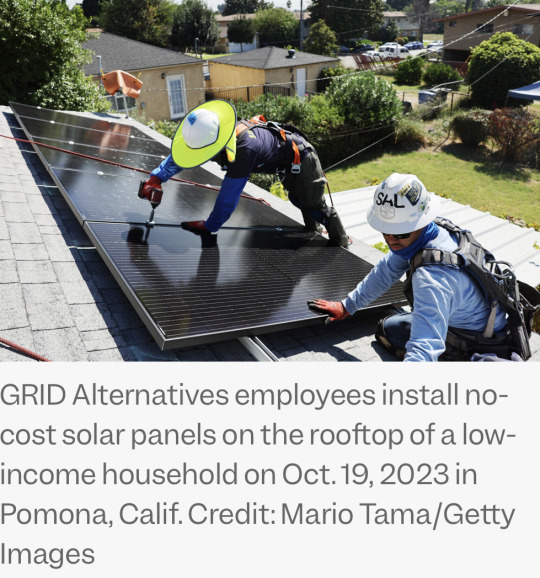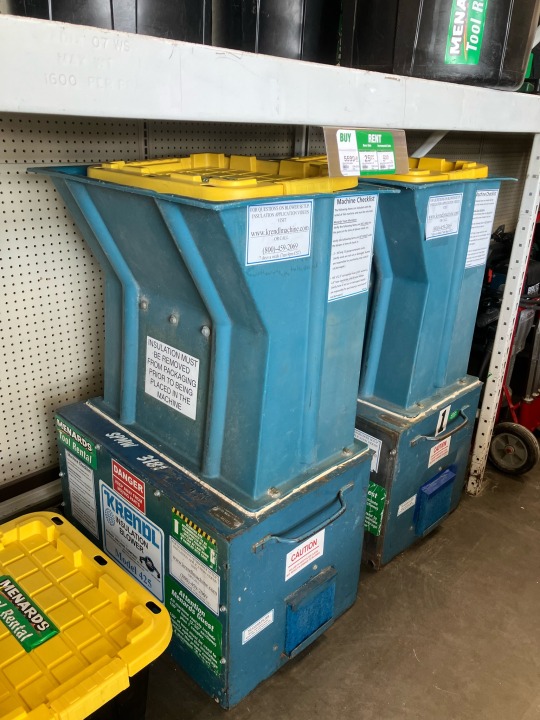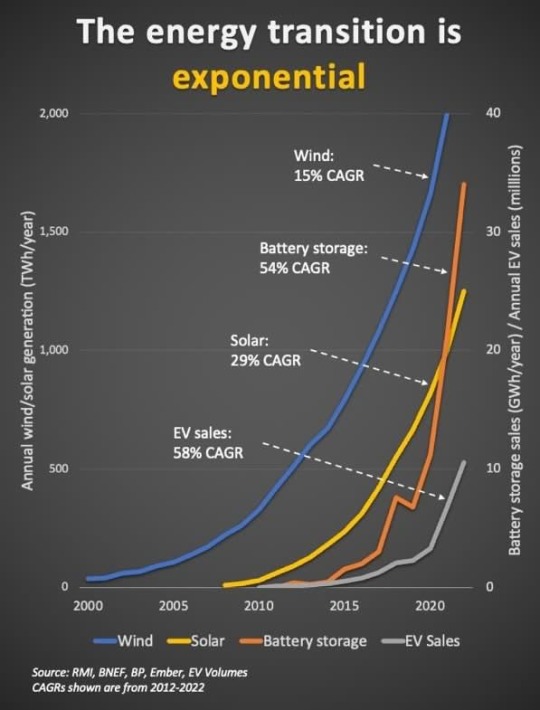#energy efficiency
Text
LunarPunk 🌙
Lunarpunk is Solarpunk for the night dwellers. Similar philosophy and movement but with a darker, bioluminescent, celestial aesthetic. With a focus on Community, Sustainability, Reducing Light Pollution, growing Native Flora and creating a livable and thriving home for the night dwelling Fauna (nocturnal animals, insects, and people too), and obviously, don't forget the Punk.
Lunarpunk is a very new and slowly growing subgenre and community, please continue to add new ideas, add to the conversation of sustainability, do research in your own area about the local flora and fauna, what you can do to help reduce light pollution, even if it's just coming from your home, how to be more energy efficient, how to reduce waste, save money on electricity, see if you can switch your lights to LEDs, speak with your neighbors about switching as well.
Any little bit counts.
#lunarpunk#sustainability#light pollution#environmentalism#ecopunk#solarpunk#recycling#climate change#climate action#night#environmental#envrionmental activists#punk#moon#lunar#flora and fauna#energy efficiency#ecofriendly#sustainable living#reduce reuse recycle
521 notes
·
View notes
Text
As Canadians wait for the federal government’s announcement on the future of the Greener Home Grant Program, concerns grow as the program phases out in two weeks.
“Many of our customers receive 5,000 dollars or more in both federal and provincial rebates. This is a significant funding that will soon no longer be available,” said Brodie Sampson, owner of Nova Heat Pumps and Air Conditioning.
Sampson’s team is on the eighth heat pump installation this week, and they are booked solid for the next month and a half.
Aside from heating pumps, the money people get can be used for home insulations, windows and doors, and renewable energy system.
Continue Reading
Tagging @politicsofcanada
38 notes
·
View notes
Text
62 notes
·
View notes
Text
Free eBook!! - Your Home (and Wallet) will thank you tomorrow
Learn things you can do right away to make your home more energy efficient and save money on everyday needs that you have!
Get your Free eBook Now -----> Click Here

#good ebooks#free ebooks#energy#energy efficiency#save money#tips and tricks#tools#digital download#pdf#daily free ebooks#reading#planet#save the earth#DIY#survival#self sufficient living#backyard
149 notes
·
View notes
Text
This New Mud Home Built of Hemp and Earth Demonstrates Super Energy Efficiency in the UK https://www.goodnewsnetwork.org/cobbauge-home-by-hudson-architects-is-first-modern-house-in-uk-out-of-mud/
#good news#arcitecture#energy efficiency#environmentalism#science#environment#nature#climate change#global climate change#united kingdom
13 notes
·
View notes
Text
In the past two days I've been asked twice what I think about electrifying the transportation sector.
Sure hope those people were ready for me to rant about trains again.
24 notes
·
View notes
Text
Good News - April 1-7
Like these weekly compilations? Support me on Ko-fi! Also, if you tip me on here or Ko-fi, at the end of the month I’ll send you a link to all of the articles I found but didn’t use each week - almost double the content! (I’m new to taking tips on here; if it doesn’t show me your username or if you have DM’s turned off, please send me a screenshot of your payment)
1. Three Endangered Asiatic Lion Cubs Born at London Zoo

“The three cubs are a huge boost to the conservation breeding programme for Asiatic lions, which are now found only in the Gir Forest in Gujarat, India.”
2. United Nations Passes Groundbreaking Intersex Rights Resolution

“The United Nations Human Rights Council has passed its first ever resolution affirming the rights of intersex people, signaling growing international resolve to address rights violations experienced by people born with variations in their sex characteristics.”
3. Proposal to delist Roanoke logperch

“Based on a review of the best available science, the U.S. Fish and Wildlife Service (Service) has determined that the Roanoke logperch, a large freshwater darter, is no longer at risk of extinction. […] When the Roanoke logperch was listed as endangered in 1989, it was found in only 14 streams. In the years since, Roanoke logperch surveys and habitat restoration have more than doubled the species range, with 31 occupied streams as of 2019.”
4. Fully-Accessible Theme Park Reopens Following Major Expansion

“Following the $6.5 million overhaul, the park now offers [among other “ultra-accessible” attractions] a first-of-its-kind 4-seat zip line that can accommodate riders in wheelchairs as well as those who need extra restraints, respiratory equipment or other special gear.”
5. ‘The Javan tiger still exists’: DNA find may herald an extinct species’ comeback

“A single strand of hair recovered from [a sighting] is a close genetic match to hair from a Javan tiger pelt from 1930 kept at a museum, [a new] study shows. “Through this research, we have determined that the Javan tiger still exists in the wild,” says Wirdateti, a government researcher and lead author of the study.”
6. Treehouse Village: Eco-housing and energy savings

““The entire place is designed and built to meet the passive house standard, which is the most energy-efficient construction standard in the world,” says resident Wayne Groszko, co-owner of one of the units at Treehouse.”
7. 50 rare crocodiles released in Cambodia's tropical Cardamom Mountains

“Cambodian conservationists have released 50 captive-bred juvenile Siamese crocodiles at a remote site in Cambodia as part of an ongoing programme to save the species from extinction.”
8. The Remarkable Growth of the Global Biochar Market: A Beacon of Environmental Progress

“Biochar, a stable carbon form derived from organic materials like agricultural residues and forestry trimmings, is a pivotal solution in the fight against global warming. By capturing carbon in a stable form during biochar production, and with high technology readiness levels, biochar offers accessible and durable carbon dioxide removal.”
9. 'Seismic' changes set for [grouse shooting] industry as new Scottish law aims to tackle raptor persecution

“Conservation scientists and campaigners believe that birds such as golden eagles and hen harriers are being killed to prevent them from preying on red grouse, the main target species of the shooting industry. […] Under the Wildlife Management and Muirburn Bill, the Scottish grouse industry will be regulated for the first time in its history.”
10. White House Awards $20 Billion to Nation’s First ‘Green Bank’ Network

“At least 70 percent of the funds will go to disadvantaged communities, the administration said, while 20 percent will go to rural communities and more than 5 percent will go to tribal communities. […] The White House said that the new initiative will generate about $150 billion in clean energy and climate investments[…].”
March 22-28 news here | (all credit for images and written material can be found at the source linked; I don’t claim credit for anything but curating.)
#hopepunk#good news#lion#conservation#zoo#india#intersex#lgbt rights#human rights#fish#endangered#disability#accessibility#amusement park#tiger#big cats#extinction#extinct species#ecofriendly#affordable housing#energy efficiency#crocodiles#global warming#climate change#scotland#raptor#eagles#hunting#solar panels#solar energy
6 notes
·
View notes
Text
Britons have to choose between heating and eating this winter
The UK has some of the most poorly insulated homes in Europe, although the nation was previously a leader in this area. Fifteen years ago, around a million homes a year were retrofitted with insulation and a target was set for all new homes to be zero-carbon by 2016, Big Issue reports.
However, all these initiatives are now forgotten. The UK has pulled out of the race for a low-carbon economy – and working families in need of money will be paying the price. As the cold weather arrives, energy prices are on the rise again, and from this month, people are facing another price hike: a typical annual energy bill will rise by £95 to £1,928.
It costs over £700 a year more to heat a poorly insulated home than a well-insulated one. Yet the government offers nothing to the millions of people living in draughty homes and being overcharged.
The abolition of minimum energy efficiency standards in rented properties and a return to fossil fuel boilers points to a fundamental failure of leadership, according to Big Issue.
Read more HERE

#world news#world politics#news#europe#european news#uk politics#uk news#england#united kingdom#heating#central heating systems#utilities#passivhaus#energy saving#energy storage#energy security#energy efficiency
8 notes
·
View notes
Text
Pray for us, Tumblr. Today my wife and I are going to go rent a large and intimidating device from the hardware store to try to blow fire-retardant recycled paper insulation into the walls of our dining room. APPARENTLY the dining room used to be like a 3 season porch and it is not insulated. We’ve been just sort of sealing it off all winter, paying outrageous heating bills. I though we’d have to wait till summer to both replace the very damaged siding and put in new insulation but it turns out we can blow it in from the inside so we’re trying that. We still have a lot of cold weather ahead of us in MN. (It’s a comparatively balmy 22F right now) so it’s still well worth it to get it done this winter.
This is like a 1 hour job for ppl who know what they’re doing. But we are. Not that. And the “advice” I got from the one neighbor whose done this before consisted mainly of pitying laughter. So we’ll see how this goes! I’ll let you know.
Update: forgot the Menards is for MANY MEN and PROFESSIONALS and they only rent a 300 lb industrial machine for reason. Imagine lugging this up to your attic. Bad boy is proper steel.

We will not be deterred. I am determined to be one of those middle aged queers who does a bunch of DIY projects to their very old house. On to the next hardware store!
43 notes
·
View notes
Link
Few climate technologies have ever had a moment quite like the one heat pumps are currently enjoying.
While the share of electric vehicles and induction stoves sales may be growing, they still represent a sliver of all cars and stoves sold respectively. US heat pump sales, though, surpassed those of gas furnaces last year as the tech of choice to keep homes comfortable.
The sudden rise of the heat pump may have you wondering: what actually are they, how do they work, and are there incentives that can help lower the price?
What does a heat pump do?
Calling it a “heat pump” is perhaps a bit misleading. That’s because heat pumps both heat and cool your home depending on the season. To do this, they use electricity rather than methane gas, cutting down harmful greenhouse gas emissions and public health and safety concerns.
“It sounds like magic,” said Vince Romanin, the founder of window heat pump startup Gradient. Spoiler: it’s just physics.
How do they work?
The short answer is they work by moving – pumping, if you will – heat from one place to another. It’s actually the same thing that air conditioners do: they pump heat out of your house and draw cool air in. If you’ve ever stood outside next to an air conditioner, you can feel that heat being pushed out. A heat pump can do that same task in summer, but in winter, it also has the ability to reverse the process and pull heat in from the outside into your home. Some heat pumps, called ground source heat pumps, use the ground outside a home as a place to pull or dump heat.
Are heat pumps better than gas furnaces?
In many cases, yes. They’re wildly more efficient. It’s a lot easier to move heat around rather than creating it from scratch by lighting gas on fire and then blowing the resulting heat around. Romanin noted that heat pumps are 300% more efficient than gas furnaces.
“It is ridiculous to burn a fossil fuel at thousands of degrees to heat up your apartment by 10 to 20 degrees. It’s a crime against the laws of thermodynamics,” he said.
That efficiency can translate to cost savings. An analysis by Carbon Switch found switching from a gas furnace to a heat pump would save the average US household $557 a year on its home energy bill.
Beyond efficiency, it’s also much safer to not pipe gas into your home on a regular basis due to a range of public health and safety impacts. Improperly installed or maintained ventilation systems can result in pollution being sucked up into your home. Then there’s the danger of a flammable material being transported to and ignited in your basement.
We haven’t even gotten to the climate benefits yet. A study released last year found that replacing gas furnaces with heat pumps in every US home could cut carbon emissions by up to 53%. Meanwhile, the Carbon Switch analysis found home emissions would drop by 142m metric tons.
Do heat pumps work in cold weather?
Yes. Mostly.
The conventional wisdom has been that air source heat pumps don’t work well in cold weather, because it’s hard to extract heat from extremely cold air. Some systems also use energy-intensive forms of heating to prevent their icing up, cutting into efficiency gains. Ground source heat pumps have an easier time since the ground temperature remains fairly constant.
But “it’s astonishing what manufacturers, what universities have been able to do”, said Subhrajit Chakraborty, an R&D engineer at the University of California, Davis’s Western Cooling Efficiency Center.
Air source heat pumps have gotten much more efficient at capturing heat even when it’s sub-zero outside. This year, Energy Star, a US government program promoting energy-efficient appliances, launched a cold-climate rating for heat pumps. A database kept by the non-profit Northeast Energy Efficiency Partnerships shows there are more than 1,400 models that fit the bill.
Real-world tests in cold climates from Maine to Minnesota show that heat pumps can operate in some of the harshest winter conditions out there.
OK, and how much do they cost?
They aren’t overly cheap. In the US, installing a heat pump is a four- or possibly five-figure investment depending on the size of the house, climate and other factors. Air source heat pumps are generally cheaper than ground source ones, though Chakraborty said the efficiency gains of a ground source heat pump may make it more cost-effective over a 15-year or longer timescale.
Are there incentives to help me afford one?
There are. In the US, the Inflation Reduction Act includes tax credits that cover 30% of the cost of a heat pump up to $2,000 (about £1,700). For households with under 80% of the median area income, the law is even more generous. It will cover 100% of the upfront costs of buying and installing a heat pump up to $8,000 (about £6,700). Many states also offer rebates. Stacked together, these benefits could help make heat pumps accessible to everyone rather than just the well-off, who have traditionally bought them.
In the UK, the government offers homeowners up to £6,000 ($7,150) to cover installing a heat pump. The urgency to install more heat pumps has increased in the wake of the Ukraine war, yet a third of the £6.6bn ($7.8bn) put forward by the government for efficiency upgrades remains unspent as of last month.
Some Australian states as well as the federal government offer incentives for heat pump hot water heaters, a related type of technology that warms up water instead of space.
What stands in the way of installing a heat pump in every home?
For one, not everyone lives in a freestanding home. Apartment dwellers have had few options. Gradient and a growing number of HVAC companies in the US are looking to change that, though, by offering window heat pumps.
The Gradient model is a sleek-looking unit that sits like a saddle over your window sill and requires no professional installation. It works in more temperate climates, though Romanin said a cold-climate model is on the way. But the company, along with Midea America, are set to do a pilot in New York public housing starting this year that will install window heat pumps that can operate in colder temperatures as part of a $70m HVAC upgrade program.
Installing a heat pump and electrifying other appliances also might require homeowners to update their electrical panels, which can add another $1,300 to $3,000 to any project. (In the US, the IRA does include a $600 tax credit for those upgrades when done in conjunction with other electrification upgrades.)
What comes next for the humble heat pump?
Chakraborty’s group is working on a multifunction heat pump that can be used for space and hot water heating.
Romanin said new forms of heat-pump refrigerant are also making their way to the market. HFCs, currently some of the most common refrigerants, are also extremely potent greenhouse gases. They became widespread because they replaced CFCs, refrigerants that damaged the ozone layer. HFCs are now on their way out, but Romanin said “if we don’t focus on what we’re replacing them with, we could repeat this same mistake”.
Gradient uses a relatively low-impact HFC called R32. But he said “this is a stepping stone refrigerant for us”, and that the company is seeking even better options.
29 notes
·
View notes
Text
Remember, even if it's not turned on, plugged in devices and appliances use electricity.
Some examples are Lamps, Fans, Heaters and Chargers.
Unplug what you're not using. Save some energy and money.
#solarpunk#lunarpunk#ecopunk#ecofriendly#sustainability#energy efficiency#climate action#climate change#recycling#climate emergency#climate crisis#environmentalism#envrionmental activists#environment#eco#energy efficient
178 notes
·
View notes
Text

The compound annual growth rate of renewables is now exponential. The transition is well under way.
Via Daniel Moser on Mastodon
7 notes
·
View notes
Text

50 home automation icons.
Check them out!
If you like them, tell a friend ♡
Side Project
#home automation#smart home#smart home icons#domotics#icons#icon design#smart devices#smart appliances#sensors#robotics#AI#energy efficiency#editable icons#icon pack#graphic design#illustration#Side Project
2 notes
·
View notes
Text

Shedding Light on LED Lifespan: Key Things You Need to Know
LED lighting has revolutionized the way we illuminate our homes and businesses. Not only do LED lights offer energy efficiency, but they also have a significantly longer lifespan compared to traditional lighting solutions. Understanding the lifespan of LED lights is crucial for consumers who are looking to make informed decisions about their lighting options.
Understanding LED Lifespan Ratings
The lifespan of an LED is typically represented by the number of hours it can operate before its brightness diminishes to 70% of its original output, a point known as L70. On average, LEDs have a lifespan ranging from 25,000 to 50,000 hours, a stark contrast to the 1,000 to 2,000 hours offered by incandescent bulbs. This means that an LED can last anywhere from 3 to 25 years, depending on usage, which is 25 to 50 times longer than incandescent bulbs.
Factors Affecting LED Durability
Several factors influence the longevity of an LED light. Heat management is among the most critical; LEDs that are not adequately cooled can overheat, leading to a quicker decline in light output. Quality of components is also essential; higher-quality LEDs with robust heat sinks and driver electronics are proven to last longer. Manufacturers often provide warranties, which can be a reliable indicator of an LED's lifespan.
Real-World Usage Versus Lab Conditions
It's important to note that while LEDs are tested to last a certain number of hours under lab conditions, real-world factors like voltage fluctuations, frequent switching, and environmental conditions can reduce this figure. For example, an LED that is rated for 50,000 hours may only achieve 30,000 hours in a hot or unstable electrical environment.
LEDs in Different Applications
The application of LED lighting also impacts its lifespan. Residential LEDs that are used for a few hours each evening will last longer than those used in a commercial setting, where lights are on for extended periods. According to a 2022 report from the Department of Energy, LEDs in commercial settings have about a 15% shorter lifespan on average than those in residential applications due to longer usage hours.
Comparing LED Lifespan to Other Technologies
When compared to compact fluorescent lamps (CFLs) and halogen lights, LEDs come out ahead in lifespan. A typical CFL has a lifespan of about 8,000 to 15,000 hours, and a halogen lamp has around 2,000 to 4,000 hours. This significant difference has led to a shift in the market, with LED sales surpassing other technologies significantly. In 2023, market reports indicated that LEDs accounted for approximately 60% of the global lighting market share.
Cost Savings Over Time
The extended lifespan of LEDs translates directly into cost savings for consumers. Despite the higher upfront cost, the long-term operation cost of LEDs is lower. If you consider the fact that you would need to replace an incandescent bulb 25 to 50 times over the lifespan of one LED, the savings become apparent. Energy Star reports that the average household can save about $225 per year on energy bills by fully converting to LED lighting.
End-of-Life and Recycling
Towards the end of its lifespan, an LED's light output decreases, and its color may shift. However, LEDs contain no mercury and are often made with recyclable materials, making them more environmentally friendly at the end of their life than CFLs. Recycling programs for LEDs are becoming more common, with several major cities and companies instituting take-back programs to ensure environmentally safe disposal and recycling.
With their long operational life, durability under various conditions, and significant energy savings, LEDs represent a smart choice for consumers. As technology advances, the efficiency and lifespan of LED lighting are only expected to improve, further solidifying their position as the premier choice in lighting solutions worldwide.
#led#led lights#energy efficiency#energy management#led retrofitting#energy savings#led life span#lighting solutions
3 notes
·
View notes
Text
#good news#science#climate change#environmentalism#carbon capture#batteries#environment#innovation#industries#renewable energy#energy efficiency#electricity
8 notes
·
View notes
Text
Turning Solar Energy into Money: 10 Ways to Profit from Sunlight
The sun is an incredibly powerful and abundant source of energy, and there are many ways to turn sunlight into money. In this article, we will explore some of the most effective ways to do so.
Install Solar Panels on Your Property
One of the most direct ways to turn sunlight into money is by installing solar panels on your property. Solar panels are made up of photovoltaic (PV) cells that…

View On WordPress
#Capitalizing on the solar energy industry#Creative ways to turn sunlight into money#energy efficiency#Energy savings#Generating revenue with solar panels#green energy#Innovative ideas for making money with solar power#Maximizing solar energy for profit#Monetizing solar technology#Net metering#Photovoltaic cells#Profitable solar energy ventures#Real estate development#renewable energy#Solar consulting#solar energy#Solar energy business opportunities#Solar energy education#Solar energy investment#Solar energy investment strategies#Solar farms#Solar financing#Solar installation#Solar panels#solar power#Solar technology#Solar-powered art#Sunlight#Sustainable energy#Ways to earn money with solar energy
11 notes
·
View notes